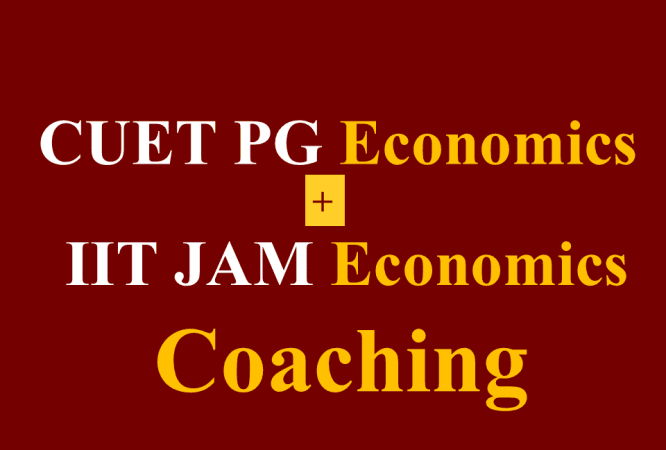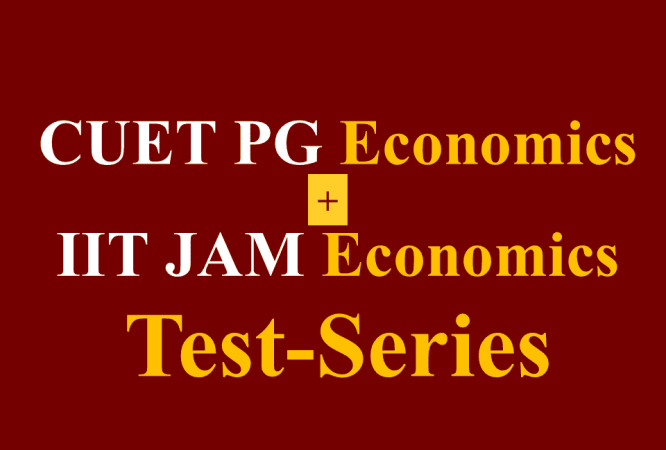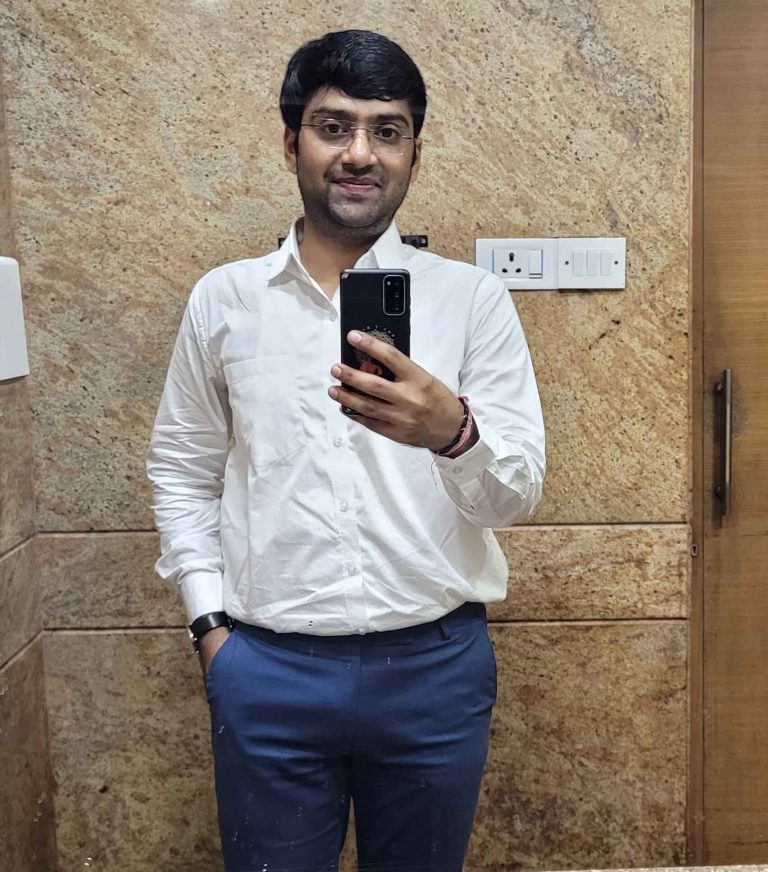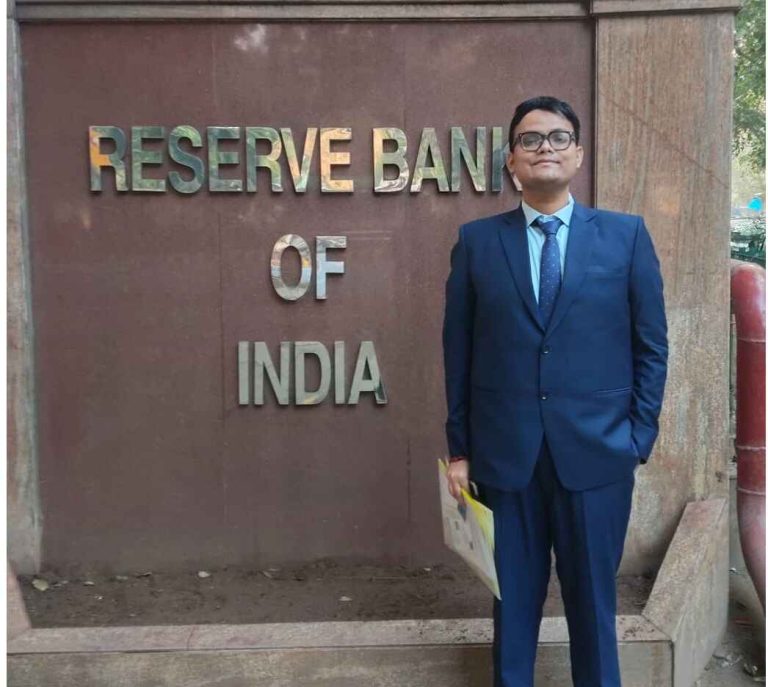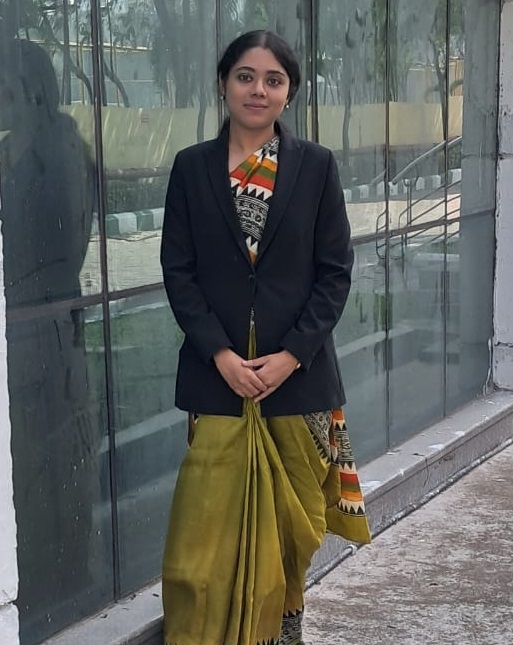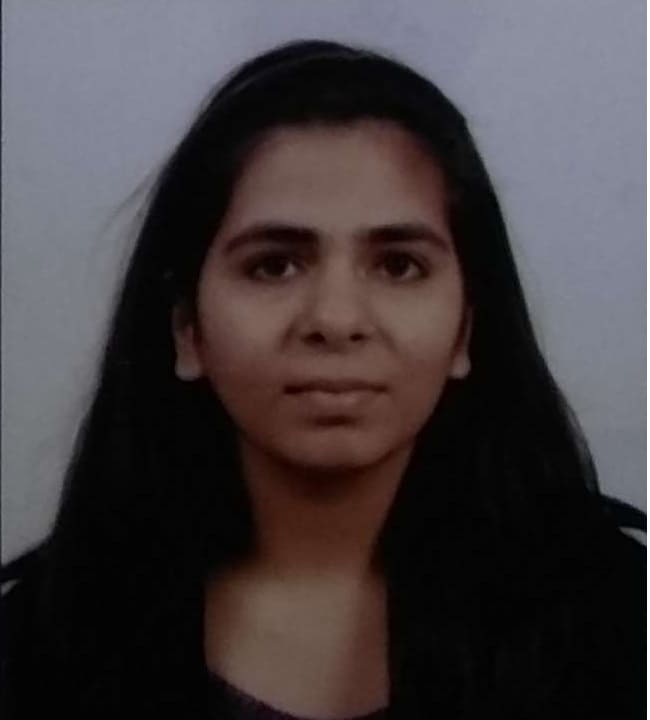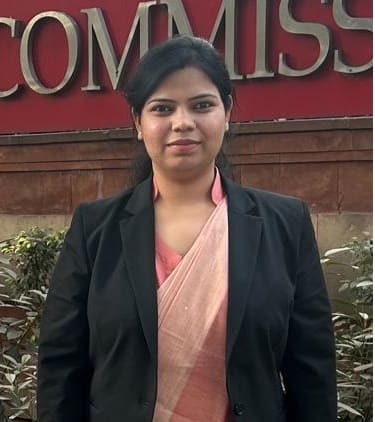MA Economics Online Coaching and Test Series
Ongoing !
MA Economics Entrance Online Course and Mock Tests, targeting CUET PG Economics, ISI MSQE, IIT JAM Economics, IIT GATE Exam, and other similar exams !

Online Courses MA Economics Entrance Exam
Explore online courses for CUET PG Economics Exam, IIT JAM Economics Exam, ISI MSQE Exam
What Differentiates our MA Economics Coaching?
MA Economics Exam Expertise
Quality Content
No Misleading Marketing !
MA Economics Entrance : Everything You Need to Know !
CUET PG Economics MA Economics Entrance Coaching
How can I get admission in MA Economics Course in India ?
Admission in MA Economics course in India is based on the results of entrance exam. Depending upon which college you want to enroll in for MA Economics, you will have to appear for an entrance exam.
CUET PG Economics : Delhi School of Economics, Jawaharlal Nehru University (JNU), Indira Gandhi Institute of Development Research (IGIDR), and many other.
IIT JAM Economics Exam: For admission into IITs for MA Economics
ISI MSQE: For Admission into Indian Statistical Institute (ISI) Master’s in Quantitative Economics (MSQE) Course
Other Universities conduct their own exams. The list includes IIFT, etc
Through CUET PG Economics Exam, which colleges accept admissions in MA Economics course ?
Admission into the MA Economics Course through CUET PG Economics Exam can be taken in the Universities such as University of Delhi (Delhi School of Economics, DSE), Jawaharlal Nehru University (JNU), Indira Gandhi Institute of Development Research (IGIDR), Banaras Hindu University (BHU), Delhi Technological University (DTU), etc.
Which are the best colleges for pursuing MA Economics in India ?
The best colleges for MA Economics include Delhi School of Economics, Jawaharlal Nehru University (JNU), Indira Gandhi Institute of Development Research (IGIDR), Indian Institute of Technology (IITs), Indian Statistical Institute (ISI), etc.
How to get admission in Delhi School of Economics, JNU and IGIDR for MA Economics ?
Admission into MA Economics course at Delhi School of Economics (DSE), Jawaharlal Nehru University (JNU), Indira Gandhi Institute of Development Research (IGIDR) happens through CUET PG Economics Entrance Exam
Out of DSE, JNU and IGIDR, which University is better for MA Economics Degree.
RBI DEPR Eligibility includes A Master’s Degree in Finance (or any other master’s degree where “Finance” is the principal constituent* of the curriculum / syllabus, namely MA / MSc in Quantitative Finance, Mathematical Finance, Quantitative Techniques, International Finance, Business Finance, Banking and Trade Finance, International and Trade Finance, Project and Infrastructure Finance, Agri Business Finance). “Principal constituent” with respect to syllabus / curriculum means half or more of the total courses / electives / credits must be in Economics or Finance.
DSE VS JNU VS IGIDR VS ISI for MA / MSc Economics Course ?
DSE, JNU and IGIDR are all top Universities to pursue MA Economics from India. A candidate with a high CUET PG Economics score getting admission in all of these institute will have to choose one based on what the candidate’s career plans after MA Economics Course.
What are the career options after MA Economics Degree?
To be eligible for the RBI DEPR Exam, you should have completed (result should have been declared) the minimum educational qualification before the cut-off date specified by RBI in the RBI DEPR Official Recruitment Notification of that year.
What is CUET PG Economics MA Economics Entrance Exam Syllabus ?
RBI DEPR Phase-1 Exam Syllabus includes Master’s level topics covered under Basic Statistics, Econometrics, Microeconomics, Macroeconomics, and Indian Economy. For RBI DEPR Phase-2 Examination, candidates have to cover the same subjects from the point of view of a descriptive examination.
Candidates should prepare the detailed RBI DEPR Exam Syllabus for cracking the exam in the next attempt.
How to prepare for MA Economics Entrance Exam ?
The RBI DEPR Exam process is divided into 2 Phases and 4 Papers (2 papers at Phase-1 and 2 Papers at Phase-2), each of 100 marks and 2 hours duration. At Phase-1, candidates have to answer an objective paper on Economics and an English (descriptive) paper.
The candidates who qualify RBI DEPR Phase-1 Exam will have to appear for Phase-2. At RBI DEPR Phase-2 Exam, candidates will be tested in 2 Descriptive Papers : (i) Microeconomics and Macroeconomics (ii) Quantitative Economics and Indian Economy.
The candidates who qualify RBI DEPR Phase-2 will be shortlisted to appear for an interview before the RBI Services Board.
The final selection / merit list will be prepared on the basis of marks scored by candidates at RBI DEPR Phase-1 Exam (Max Marks: 200), RBI DEPR Phase-2 (Max Marks: 200) Exam and Interview (Max Max: 75).
Which is the toughtest subject under MA Economics Entrance Syllabus ?
For the RBI DEPR Exam, most candidates find the Statistics and Econometrics subject more challenging than the other subjects. You may be happy to know that Testonomics offers the best coaching for RBI DEPR Statistics and Econometrics subject
What is Eligibility criteria for CUET PG MA Economics Entrance Exam ?
The RBI DEPR Exam differs to a great extent from the Delhi School of Economics M.A. Economics / M.Phil Economics / PhD Economics Entrance Examinations. In particular, the RBI DEPR Exam is relatively less difficult. Also, RBI DEPR Exam contains 3 descriptive papers as well.
Which universities accept MA Economics Admissions through CUET PG Economics score ?
For a candidate starting from scratch, a dedicated preparation of 6 months is recommended before appearing for the RBI DEPR Examination.
I am pursuing Economics Hons. right now. When should I start preparing for MA Economics Entrance exam ?
If your preparation of UPSC Indian Economic Service Exam syllabus is sound, then you can begin attempting the RBI DEPR Mock Tests to familiarise yourself with the RBI DEPR Exam Pattern and the kind of questions being asked at RBI DEPR Exam in recent years.
How should I begin preparation for CUET PG Economics MA Entrance Exam
The UPSC CSE Economics Optional Syllabus and Exam Pattern places much lesser weightage on numerical-based questions, including those from Statistics & Econometrics ! In contrast, for RBI DEPR Exam, numericals form an important part of syllabus and exam pattern.
Hence, you should prepare Mathematical Economics, Statistics and Econometrics in addition to UPSC CSE Economics Optional Syllabus. In case you need assistance in preparing any subject from the RBI DEPR Exam Syllabus, remember that Testonomics provides the best online course and Mock Tests for RBI DEPR Exam.
After preparing the RBI DEPR Exam Syllabus, you can begin attempting the RBI DEPR Mock Tests to familiarise yourself with the RBI DEPR Exam Pattern and the kind of questions being asked at RBI DEPR Exam in recent years.
What was the RBI DEPR Exam Selection cut-off last year?
For RBI DEPR 2023 Exam, the cut-off was 41.00 marks (out of 100) in Phase-1, 191.67 marks (out of 300 marks) in Phase-2 and 255 marks (out of 375) for final selection. The previous years RBI DEPR Exam cut-off can be found here.
Why is RBI DEPR Exam considered tough ?
What makes RBI DEPR Exam tough is that a few thousand candidates from the Top Economics schools across India and the world compete for a handful of vacancies after extensive preparation and practice ! Thus, it is the selection of the better among the best !
IIT JAM Economics MA Economics Entrance Exam
Item #1
Item #2
Item #3

MA Economics Entrance Exam Preparation In Your Fingertips
Testonomics Video Courses for MA Economics Entrance Exam are available only on the App (which can be installed only on a mobile phone / tablet). The Test Series can be accessed only through a Laptop / Desktop.
iOS Users should download the Classplus App and use VSSPM as Organisation Code while login.
Interview Transcripts RBI DEPR and Indian Economic Service
-
-
August 14, 2025
-
-
August 14, 2025
-
-
August 14, 2025
-
-
October 26, 2024
-
-
October 26, 2024
-
-
October 26, 2024
-
-
October 26, 2024
-
-
October 26, 2024
-
-
February 12, 2024
-
-
January 31, 2024
-
-
October 30, 2022
-
-
October 29, 2022
-
-
October 28, 2022
-
-
October 28, 2022
Ultimate Guide to MA Economics Entrance : CUET PG Economics, IIT-JAM Economics, ISI MSQE etc.
An MA (Master of Arts) in Economics or MA Economics is a postgraduate academic degree designed to provide students with a deep, rigorous, and advanced understanding of economic theory, empirical methods, and their application to policy-making and business strategies. Admission in MA Economics programme is based on MA Economics Entrance Exams.
The MA Economics Entrance exams are competitive tests designed to select candidates for Master’s in Economics programs at top universities in India, such as Delhi School of Economics (DSE), Indian Statistical Institute (ISI), Indian Institutes of Technology (IITs), Jawaharlal Nehru University (JNU), Indira Gandhi Institute of Development Research (IGIDR), Madras School of Economics (MSE), Gokhale Institute of Politics and Economics (GIPE), Panjab University, Hyderabad Central university (HCU), etc.
The MA Economics Entrance exams evaluate candidates’ proficiency in core Economics concepts, including Microeconomics, Macroeconomics, Mathematical Methods in Economics (MME), Statistical Methods, Econometrics and Indian Economy.
Benefits of MA Economics Degree
A Master’s degree in Economics offers exceptional career growth opportunities due to its focus on developing analytical, quantitative, and policy-oriented skills that are highly valued across diverse sectors.
In an increasingly data-driven and interconnected world, the demand for professionals who can analyze complex information, understand market dynamics, and formulate strategic insights is skyrocketing. A Master’s in Economics directly addresses this need, equipping graduates with a unique blend of analytical rigor, quantitative proficiency, and a holistic understanding of how economies function. This makes it an incredibly lucrative option for career growth.
Career Options after MA Economics
- In the government and public sector, highly sought-after roles include the Indian Economic Service (IES) officer, RBI DEPR (Economist), SEBI Grade A Officer (Research Stream), PFRDA Grade A Officer (Economics), etc. Other financial institutions also recruit under specialist Economics discipline
- The private sector offers extensive opportunities in finance (e.g., Financial Analyst, Investment Banker, Risk Analyst, Credit Analyst, Portfolio Manager), consulting (e.g., Economic Consultant, Management Consultant, Policy Analyst), and the rapidly expanding fields of data science and business analytics
- Additionally, many graduates pursue careers in research and academia as economists, research associates, or lecturers/professors after further studies like M.Phil. or Ph.D., while others contribute to international organizations like the World Bank and IMF, or work in market research, journalism, and even entrepreneurship
Best Colleges to Pursue MA Economics in India
India boasts several highly regarded institutions for pursuing an MA in Economics, each with its unique strengths, faculty specializations, and admission processes.
- Delhi School of Economics (DSE), University of Delhi, Delhi
- Indian Statistical Institute (ISI), Kolkata/Delhi (MSQE Program)
- IITs (Indian Institutes of Technology) offering MA/M.Sc. Economics
- Jawaharlal Nehru University (JNU), Delhi
Indira Gandhi Institute of Development Research (IGIDR), Mumbai
Madras School of Economics (MSE), Chennai
- Gokhale Institute of Politics and Economics (GIPE), Pune
- University of Hyderabad, Hyderabad
- University of Calcutta, Kolkata
- Jamia Millia Islamia (JMI), New Delhi
- Ashoka University, Sonipat (Haryana)
Shiv Nadar University, Greater Noida
- Symbiosis School of Economics (SSE), Pune
- Christ University, Bangalore
- Delhi Technological University
- South Asian University
- Panjab University
- Banaras Hindu University
- IIFT
- TERI
MA Economics Admission Process
To pursue an MA Economics degree in India, candidates must clear one of the major entrance exams, depending on their target institution: the CUET PG Economics Exam (for Delhi School of Economics (DSE), JNU, IGIDR, etc.), IIT JAM Economics Exam (for M.Sc from one of the IITs), ISI MSQE Exam, or university-specific exams like those for the Indian Institute of Foreign Trade (IIFT), Madras School of Economics (MSE), or Shiv Nadar University.
CUET PG Economics Ultimate Guide
Are you aspiring to pursue a Master’s degree in Economics from a top university in India? The Common University Entrance Test (CUET) for Postgraduate (PG) admissions has become a pivotal examination for students aspiring to pursue Master’s degrees in various disciplines, including Economics, at numerous central and participating state/private universities across India.
The CUET PG Economics exam (with subject code COQP10) streamlines the admission process, offering a single national-level test for entry into many Universities / Colleges.
The CUET PG Economics exam is your gateway to prestigious institutions like the Delhi School of Economics (DSE), Jawaharlal Nehru University (JNU), and many others.
The CUET PG Economics Exam (Test Paper Code: COQP10) is a national-level entrance test for MA Economics programs at over 50 central, state, deemed, and private universities. As per the CUET PG Economics Notification 2025 (exams.nta.ac.in), it evaluates candidates’ proficiency in Microeconomics, Macroeconomics, Quantitative Methods, and Indian Economy.
The CUET PG Economics Exam (COQP10) is one of the most competitive postgraduate entrance tests in India. In 2025, a total of 20,226 candidates applied for the exam, out of which 15,844 appeared for the test. With limited seats available, securing a high rank in the CUET PG Economics exam requires strategic preparation and a deep understanding of the CUET PG Economics syllabus. Resources like Testonomics Test Series, CUET PG Economics Previous Year Papers, and CUET PG Economics Coaching from platforms like Testonomics ensure you’re well-prepared to secure a spot in prestigious institutions.
| Exam Name | Conducting Body | Key Colleges Accepting Scores |
|---|---|---|
| CUET PG Economics (COQP10) | National Testing Agency (NTA) | Delhi School of Economics (DSE), Jawaharlal Nehru University (JNU), Indira Gandhi Institute of Development Research (IGIDR), University of Hyderabad, Centre for Development Studies (CDS), Delhi Technological University (DTU), Central University of Punjab, Banaras Hindu University (BHU), Babasaheb Bhimrao Ambedkar University, Jamila Milia Islamia (JMI), Pondicherry University, Dr. B.R. Ambedkar School of Economics University, Bengaluru, Dr. B.R. Ambedkar University Delhi, IIS (Deemed to be) University, Jaipur, TATA Institute of Social Sciences (TISS), TERI School of Advanced Studies, Amity University Noida, Gokhale Institute of Politics and Economics (GIPE). South Asian University (SAU). Gokhale Institute of Politics and Economics (GIPE), Symbiosis School of Economics, TERI Institute of Advanced Studies, Amity University Uttar Pradesh – Noida, Azim Premji University |
| ISI Admission Test [for Master of Science in Quantitative Economics (MSQE)] | Indian Statistical Institute | ISI Delhi and Kolkata |
IIT JAM Economics (for M.Sc. Econ) | IITs | Indian Institutes of Technology (IITs) |
| Universities Conduct their Own Exam | Respective Universities / Colleges | Indian Institute of Foreign Trade (IIFT), Madras School of Economics, Shiv Nadar University |
CUET PG Economics Exam Pattern
Understanding the CUET PG Economics Exam Pattern is critical for effective preparation. Here’s a detailed breakdown:
Mode: Computer-Based Test (CBT).
Question Type: 75 multiple-choice questions (MCQs).
Duration: 90 minutes.
Marking Scheme:
+4 marks for each correct answer
-1 mark for each incorrect answer
0 marks for unanswered questions
Total Marks: 300.
Language: Bilingual (English and Hindi).
Sections: The Economics paper typically consists solely of subject-specific knowledge questions.
The exam’s tight timeline demands strong time management, which you can hone through CUET PG Economics Test Series like Testonomics Test Series. Practicing with MA Economics Entrance Test Series helps simulate the exam environment, reducing errors due to negative marking. For personalized guidance, consider CUET PG Economics Coaching from Testonomics, which offers expert strategies tailored to the exam pattern.
CUET PG Economics Syllabus
The CUET PG Economics Syllabus is a crucial guide for aspirants preparing for this competitive exam. The comprehensive CUET PG Economics covers key topics like Microeconomics, Macroeconomics, Statistics, Econometrics, Indian Economy, and Mathematical Economics, the syllabus ensures a comprehensive understanding of core concepts. By thoroughly mastering the CUET PG Economics Syllabus, candidates can enhance their problem-solving skills and improve their chances of securing a high rank.
Best Booklist for CUET PG Economics Exam
Selecting the CUET PG Economics Best Books is crucial for a strong foundation across all syllabus areas. For Microeconomics, popular choices include Hal Varian’s “Intermediate Microeconomics” and H.L. Ahuja’s “Advanced Economic Theory,” while Macroeconomics is well-covered by Gregory Mankiw’s “Macroeconomics” or Dornbusch and Fischer. For Statistics, refer to multitple books including Mathematical Statistics by John E Freund (Miller and Miller) and Statistical Methods by SC Gupta to practice Statistics numerical questions. For Mathematical Methods in Economics, ‘Mathematics for Economic Analysis’ by Sydsaeter & Hammond and A.C. Chiang’s “Fundamental Methods of Mathematical Economics” are the gold standard. Additionally, for the Indian Economy section, you will have to make extensive use of google search, in addition to using standard books on Indian Economy. A thorough reading of the latest Economic Survey and Budget documents are indispensable to ensure comprehensive preparation for the CUET PG Economics exam.
CUET PG Economics Previous Year Papers
Practicing CUET PG Economics Previous Year Papers is an indispensable strategy for mastering the exam, offering unparalleled insights into the question patterns, significant topics, and the overall difficulty level.
Practicing CUET PG Economics Previous Year Papers is essential for understanding the exam pattern, difficulty level, and frequently asked topics. Analyzing CUET PG Economics Previous Year Question Papers also reveals trends in question types, such as numerical problems, theoretical concepts, and case-based questions. Aspirants can boost their confidence and refine their strategy by solving these papers under timed conditions. For the best preparation, combine CUET PG Economics PYQs with mock tests and syllabus-focused study to maximize your score in the upcoming exam.
CUET PG Economics Eligibility
- Age Limit: There is no age limit for candidates appearing in the CUET (PG) Economics Exam.
- Educational Qualification: Candidates who have:
i. Passed a Bachelor’s degree or equivalent examination, or
ii. Appearing in Bachelor’s degree/equivalent examination, are eligible to appear in CUET (PG) Exam.
Process After CUET PG Economics Exam
If you’re appearing for the CUET PG Economics (COQP10) exam, your scores will play a key role in securing admission to MA Economics programs in top universities like Delhi School of Economics (DSE), JNU (Jawaharlal Nehru University), IGIDR (Indira Gandhi Institute of Development Research), BHU (Banaras Hindu University), Hyderabad University, JMI (Jamia Milia Islamia), and other central/state universities.
CUET PG Exam & Result Declaration
You’ll take the CUET PG Economics exam, which tests your knowledge in Microeconomics, Macroeconomics, Quantitative Methods, and Indian Economy.
After the exam, NTA (National Testing Agency) will declare results with normalized scores (if multiple shifts exist)
2. Apply separately to all Universities
- Fill out the separate application forms of all participating universities / colleges where you are seeking admission in MA Economics programme. Each University will release its own detailed MA Economics admission schedule.
Individual MA Economics Cut-off and Merit List: Each participating university releases its own MA Economics cut-off and merit list based on CUET PG Economics scores.
3. MA Economics Seat Allotment
Out of all applicants, each University will allot MA Economics admission to the ones scoring highest marks in CUET PG Economics Exam.
If you are shortlisted, you’ll need to confirm your admission by accepting the allotted seat in MA Economics programme.
Best Strategy to Ace the CUET PG Economics Exam
Acing the CUET PG Economics exam demands a strategic, disciplined, and smart approach. With only 90 minutes for 75 questions, effective time management and a deep conceptual understanding are paramount. Here’s a winning strategy to maximize your score and secure a seat in your dream MA Economics program:
Deconstruct the Official CUET PG Economics Syllabus: Don’t just glance at it; understand every topic listed under Microeconomics, Macroeconomics, Statistics, Mathematical Methods for Economics, and Indian Economy. Prioritize topics that frequently appear in CUET PG Economics previous year papers.
Focus on Economics Fundamentals: Economics builds upon core concepts. Ensure you have a crystal-clear understanding of all basic understanding of Economics, including utility maximization, production functions, national income identities, monetary and fiscal policies, and basic statistical and mathematical tools.
Utilize Standard Textbooks: Refer to the CUET PG Economics best books for each section. For instance, Varian for Microeconomics, Dornbusch & Fischer for Macroeconomics, and reliable Indian Economy resources will provide comprehensive coverage. Don’t just read; internalize the logic and derivations.
Visual Learning: For quantitative topics in CUET PG Economics Syllabus, draw diagrams and graphs (e.g., demand/supply curves, IS-LM diagrams) to solidify your understanding. Practice numerical problems regularly, especially those involving elasticity, multipliers, and basic econometrics.
- Practice Extensively: The Key to Speed and Accuracy in CUET PG Economics Exam
Solve CUET PG Economics Previous Year Papers Diligently: This is non-negotiable. Work through CUET PG Economics previous year papers under timed conditions. Analyze your mistakes to identify weak areas and common pitfalls. This step is crucial for understanding the NTA’s question-setting patterns
- Enroll in a Quality CUET PG Economics Test Series: Regularly attempting a dedicated CUET PG Economics test series for MA Economics entrance. These CUET PG Economics Mock Tests simulate the actual CUET PG Economics exam environment, helping you improve speed, accuracy, and endurance. Leverage the performance analytics provided by these series to track your progress and refine your strategy.
- Sectional Practice: Don’t just rely on full mocks. Take sectional tests to target specific areas where you need improvement, such as quantitative methods or current affairs related to the Indian economy.
Smart Revision & Current Affairs Integration
Concise Notes: While studying, make crisp, handwritten notes of key concepts, formulas, and important Indian economic facts. These will be invaluable for last-minute revision.
Stay Updated on Indian Economy: The Indian Economy section often includes questions on recent economic policies, government schemes, and current trends. Read a reputed financial newspaper (e.g., The Economic Times, Business Standard) and refer to the latest Economic Survey and Union Budget documents.
- Consider Expert Guidance:
CUET PG Economics Coaching: If you struggle with self-discipline or complex concepts, joining Testonomics CUET PG Economics can provide structured learning, expert faculty guidance, and a competitive peer group. Testonomics offers an unmatched CUET PG Economics Coaching.
IIT JAM Economics Ultimate Guide
Ultimate Guide to IIT JAM Economics Exam 2025: Complete Preparation Strategy
The IIT JAM Economics exam is one of the most competitive entrance tests for postgraduate programs in Economics at prestigious Indian Institutes of Technology (IITs) and other top institutions. This comprehensive guide covers everything you need to know to crack the IIT JAM Economics exam and secure admission to your dream college.
What is IIT JAM Economics?
IIT JAM (Joint Admission Test for M.Sc.) Economics is a national-level entrance examination conducted by IITs for admission to M.Sc., M.A., and other postgraduate programs in Economics. The exam is held once a year and serves as the gateway to pursuing higher education in Economics at India’s premier technical institutions.
Key Facts About IIT JAM Economics 2025
- Conducting Body: IIT (rotates annually)
- Exam Mode: Computer-based Test (CBT)
- Duration: 3 hours
- Total Questions: 60
- Maximum Marks: 100
- Language: English
- Exam Pattern: Multiple Choice Questions (MCQs) and Numerical Answer Type (NAT) questions
IIT JAM Economics Eligibility Criteria
Educational Qualification
- Bachelor’s degree with Economics as one of the subjects
- Minimum 55% aggregate marks (50% for SC/ST/PwD candidates)
- Final year students can also apply
Age Limit
There is no age limit for the IIT JAM Economics exam, making it accessible to candidates of all age groups.
IIT JAM Economics Exam Pattern 2025
Understanding the exam pattern is crucial for effective preparation:
Question Distribution
- Section A: 30 Questions (1 or 2 marks each)
- Section B: 10 Questions (2 marks each)
- Section C: 20 Questions (1 or 2 marks each)
Marking Scheme
- MCQs: +1/+2 marks for correct answers, -1/3 or -2/3 for incorrect answers
- NAT Questions: +1/+2 marks for correct answers, no negative marking
Question Types
- Multiple Choice Questions (MCQs): 4 options with one correct answer
- Multiple Select Questions (MSQs): Multiple correct options
- Numerical Answer Type (NAT): Direct numerical input required
Complete IIT JAM Economics Syllabus
Microeconomics (40% weightage)
- Consumer Theory: Utility maximization, demand functions, consumer surplus
- Producer Theory: Production functions, cost minimization, profit maximization
- Market Structures: Perfect competition, monopoly, oligopoly, monopolistic competition
- Game Theory: Strategic games, Nash equilibrium, dominant strategies
- General Equilibrium: Walrasian equilibrium, welfare theorems
- Market Failures: Externalities, public goods, information asymmetry
Macroeconomics (40% weightage)
- National Income Accounting: GDP, GNP, circular flow of income
- Classical Models: Say’s law, quantity theory of money
- Keynesian Economics: IS-LM model, aggregate demand and supply
- Growth Theory: Solow model, endogenous growth theory
- Business Cycles: Fluctuations, stabilization policies
- Open Economy: Balance of payments, exchange rates, international trade
Statistics and Econometrics (20% weightage)
- Descriptive Statistics: Measures of central tendency, dispersion
- Probability Theory: Probability distributions, Bayes’ theorem
- Statistical Inference: Hypothesis testing, confidence intervals
- Regression Analysis: Simple and multiple regression, OLS method
- Time Series Analysis: Stationarity, autocorrelation, ARIMA models
IIT JAM Economics Preparation Strategy
Phase 1: Foundation Building (4-6 months)
Start with building strong conceptual foundations in all three areas:
For Microeconomics:
- Begin with Hal Varian’s “Intermediate Microeconomics”
- Focus on mathematical derivations and graphical representations
- Practice numerical problems extensively
For Macroeconomics:
- Use Mankiw’s “Macroeconomics” for conceptual clarity
- Study Blanchard’s “Macroeconomics” for advanced topics
- Understand policy implications of different models
For Statistics and Econometrics:
- Start with basic statistics concepts
- Move to econometric applications gradually
- Practice data interpretation questions
Phase 2: Intensive Preparation (3-4 months)
- Solve previous year question papers religiously
- Take regular mock tests to improve speed and accuracy
- Focus on weak areas identified through practice tests
- Create concise revision notes for quick review
Phase 3: Final Revision (1-2 months)
- Revise all important formulas and concepts
- Solve at least 2-3 mock tests weekly
- Focus on time management strategies
- Review previous year papers for pattern recognition
Best Books for IIT JAM Economics Preparation
Microeconomics
- “Intermediate Microeconomics” by Hal Varian – Comprehensive coverage of consumer and producer theory
- “Microeconomic Theory” by Mas-Colell, Whinston, and Green – Advanced concepts and mathematical rigor
- “Microeconomics” by Pindyck and Rubinfeld – Practical applications and examples
Macroeconomics
- “Macroeconomics” by N. Gregory Mankiw – Excellent for building foundations
- “Macroeconomics” by Olivier Blanchard – Comprehensive coverage of modern macro
- “Macroeconomics” by Dornbusch, Fischer, and Startz – Good for policy analysis
Statistics and Econometrics
- “Introduction to Econometrics” by Stock and Watson – Clear explanations with examples
- “Basic Econometrics” by Gujarati – Comprehensive coverage of econometric methods
- “Statistics for Business and Economics” by Anderson, Sweeney, and Williams – Foundation building
IIT JAM Economics Mock Tests and Practice
Importance of Mock Tests
Mock tests are crucial for IIT JAM Economics preparation as they help in:
- Understanding the actual exam environment
- Improving time management skills
- Identifying strengths and weaknesses
- Building confidence for the actual exam
Recommended Mock Test Strategy
- Start taking mock tests after completing 60-70% of the syllabus
- Take at least 2-3 mock tests per week during the final months
- Analyze each mock test thoroughly
- Focus on improving accuracy rather than just speed
Time Management Tips for IIT JAM Economics
During Preparation
- Create a realistic study schedule with specific time slots for each subject
- Allocate more time to weaker areas
- Include regular breaks to avoid burnout
- Set weekly targets and track progress
During the Exam
- Spend first 10-15 minutes reading through all questions
- Start with easier questions to build confidence
- Don’t spend too much time on any single question
- Keep track of time throughout the exam
Common Mistakes to Avoid
Preparation Phase Mistakes
- Neglecting any one subject area
- Over-relying on coaching materials without reading standard textbooks
- Not practicing previous year papers
- Ignoring weak areas during revision
Exam Day Mistakes
- Not reading questions carefully
- Attempting too many difficult questions early
- Poor time allocation between sections
- Getting stuck on challenging questions
IIT JAM Economics Cutoff and Admission Process
Cutoff Trends
The IIT JAM Economics cutoff varies each year based on:
- Total number of candidates
- Difficulty level of the paper
- Number of available seats
- Category of the candidate
Admission Process
- Qualified candidates are called for counseling
- Seat allocation based on rank and preferences
- Document verification during admission
- Fee payment to confirm admission
Career Prospects After IIT JAM Economics
Academic Opportunities
- M.Sc./M.A. Economics at IITs and other premier institutions
- PhD programs in Economics
- Research opportunities in economic policy
Professional Opportunities
- Economic analyst in government organizations
- Policy researcher in think tanks
- Financial analyst in banks and financial institutions
- Corporate economist in multinational companies
Frequently Asked Questions (FAQs)
Q1: Can I appear for IIT JAM Economics without having Economics in graduation?
A: No, Economics should be one of the subjects in your bachelor’s degree to be eligible for IIT JAM Economics.
Q2: Is there negative marking in IIT JAM Economics?
A: Yes, there is negative marking for MCQs and MSQs, but not for NAT questions.
Q3: How many times can I attempt IIT JAM Economics?
A: There is no limit on the number of attempts for IIT JAM Economics.
Q4: What is a good score in IIT JAM Economics?
A: A score above 40-45 is generally considered good, but cutoffs vary each year.
Q5: Can I get admission to IISc through IIT JAM Economics?
A: Yes, IISc accepts IIT JAM scores for admission to certain programs.
Conclusion
Cracking the IIT JAM Economics exam requires dedicated preparation, strategic planning, and consistent practice. Focus on building strong conceptual foundations, practice regularly with mock tests, and maintain a balanced approach across all three subject areas. With proper preparation and the right strategy, you can achieve your goal of securing admission to a premier institution for your postgraduate studies in Economics.
Remember that success in IIT JAM Economics is not just about clearing the exam but also about developing analytical skills that will serve you throughout your career in economics and related fields. Stay motivated, follow a structured preparation plan, and give your best effort to achieve your academic goals.
Start your IIT JAM Economics preparation today and take the first step toward your dream career in economics. Good luck with your preparation!
ISI MSQE
Ultimate Guide to ISI Master of Science in Quantitative Economics (MSQE) Entrance Exam 2025
The Indian Statistical Institute (ISI) Master of Science in Quantitative Economics (MSQE) program is one of India’s most prestigious economics graduate programs. This comprehensive guide covers everything you need to know about the ISI MSQE entrance exam, from eligibility criteria to preparation strategies.
What is ISI MSQE?
The Master of Science in Quantitative Economics (MSQE) is a two-year postgraduate program offered by the Indian Statistical Institute. The program combines rigorous economic theory with quantitative methods, preparing students for careers in academia, research, policy-making, and the private sector.
Key Features of ISI MSQE Program:
- Duration: 2 years (4 semesters)
- Focus: Quantitative methods in economics
- Campus locations: Delhi, Kolkata, Bangalore
- Strong emphasis on mathematical economics and econometrics
- Excellent placement record in academia and industry
ISI MSQE Eligibility Criteria
Academic Requirements:
- Bachelor’s degree in any discipline from a recognized university
- Minimum 55% marks in graduation (50% for SC/ST candidates)
- Strong mathematical background preferred but not mandatory
Age Limit:
- No specific age limit mentioned
- Most successful candidates are typically under 27 years
ISI MSQE Entrance Exam Pattern
Exam Structure:
- Mode: Computer-based test (CBT)
- Duration: 2 hours
- Total Questions: 60 questions
- Marking Scheme: +2 for correct answers, -0.5 for incorrect answers
- Language: English
Question Distribution:
Mathematics (30-35 questions)
- Calculus
- Linear algebra
- Probability and statistics
- Differential equations
Economics (15-20 questions)
- Microeconomics
- Macroeconomics
- Basic econometrics
General Aptitude (5-10 questions)
- Logical reasoning
- Data interpretation
- Basic English comprehension
Detailed Syllabus for ISI MSQE
Mathematics Section
Calculus:
- Limits and continuity
- Differentiation and integration
- Partial derivatives
- Multiple integrals
- Vector calculus
- Optimization techniques
Linear Algebra:
- Matrices and determinants
- Vector spaces
- Eigenvalues and eigenvectors
- Systems of linear equations
- Quadratic forms
Probability and Statistics:
- Basic probability theory
- Random variables and distributions
- Expectation and variance
- Sampling distributions
- Hypothesis testing
- Regression analysis
Differential Equations:
- First-order differential equations
- Second-order linear differential equations
- Applications in economics
Economics Section
Microeconomics:
- Consumer theory
- Producer theory
- Market structures
- Game theory basics
- Welfare economics
- Public goods and externalities
Macroeconomics:
- National income accounting
- Classical and Keynesian models
- IS-LM model
- Monetary and fiscal policy
- Economic growth models
- International trade basics
Econometrics:
- Simple and multiple regression
- Hypothesis testing in regression
- Violation of assumptions
- Time series basics
ISI MSQE Preparation Strategy
Phase 1: Foundation Building (3-4 months)
Mathematics Preparation:
- Start with NCERT Class 11 and 12 mathematics
- Move to undergraduate-level calculus and linear algebra
- Practice problems from standard textbooks
- Focus on conceptual understanding
Economics Preparation:
- Begin with introductory economics textbooks
- Understand basic micro and macro concepts
- Practice graphical analysis
- Learn economic terminology
Phase 2: Intensive Preparation (2-3 months)
Advanced Mathematics:
- Solve problems from competitive exam books
- Practice optimization problems extensively
- Work on probability and statistics problems
- Time yourself while solving
Economics Deep Dive:
- Study intermediate-level economics
- Practice mathematical economics problems
- Understand economic models and their applications
- Work on case studies
Phase 3: Mock Tests and Revision (1 month)
Mock Test Strategy:
- Take at least 2-3 mock tests per week
- Analyze mistakes thoroughly
- Identify weak areas and revise
- Improve time management
Final Revision:
- Review important formulas and concepts
- Practice mental math for quick calculations
- Revise economic theories and models
- Stay updated with current economic issues
Recommended Books for ISI MSQE
Mathematics:
- “Calculus” by Thomas and Finney – Comprehensive calculus coverage
- “Linear Algebra” by Gilbert Strang – Excellent for linear algebra concepts
- “Introduction to Probability” by Sheldon Ross – Strong probability foundation
- “Mathematical Methods for Economics” by Michael Klein – Economics-focused mathematics
Economics:
- “Microeconomic Theory” by Mas-Colell, Whinston, and Green – Advanced microeconomics
- “Macroeconomics” by Blanchard – Modern macroeconomic theory
- “Introductory Econometrics” by Jeffrey Wooldridge – Comprehensive econometrics
- “Economics” by Samuelson and Nordhaus – Fundamental economics concepts
Practice Materials:
- Previous years’ question papers – Essential for understanding exam pattern
- “Quantitative Economics Entrance Exam Guide” – Specialized preparation material
- Online mock tests – Available on various educational platforms
Time Management Tips
During Preparation:
- Allocate 60% time to mathematics, 30% to economics, 10% to general aptitude
- Study 6-8 hours daily consistently
- Take regular breaks to avoid burnout
- Maintain a study schedule and stick to it
During Exam:
- Spend first 5 minutes understanding the paper
- Start with your strongest section
- Don’t spend too much time on any single question
- Use elimination technique for multiple-choice questions
- Keep track of time throughout the exam
Common Mistakes to Avoid
Preparation Mistakes:
- Neglecting mathematics preparation
- Not practicing enough numerical problems
- Ignoring current economic issues
- Procrastinating mock tests
Exam Day Mistakes:
- Not reading questions carefully
- Spending too much time on difficult questions
- Making calculation errors
- Not managing time properly
Career Prospects After ISI MSQE
Academic Career:
- Research in economics and related fields
- Teaching positions in universities
- PhD programs in top international universities
- Policy research organizations
Industry Opportunities:
- Economic consulting firms
- Investment banks and financial institutions
- Government economic departments
- International organizations (World Bank, IMF, etc.)
- Corporate strategy roles
Typical Salary Ranges:
- Fresh graduates: ₹8-15 lakhs per annum
- After 2-3 years experience: ₹15-25 lakhs per annum
- Senior positions: ₹25+ lakhs per annum
Important Dates and Application Process
Key Dates (Tentative):
- Application begins: February
- Application deadline: March
- Entrance exam: April-May
- Results announcement: June
- Admission process: June-July
Application Process:
- Visit ISI official website
- Register and fill the online application form
- Upload required documents
- Pay application fee (₹1000 for general category)
- Download admit card after registration closes
Frequently Asked Questions
Q1: Can students from non-economics backgrounds apply?
Yes, students from any discipline can apply. However, a strong quantitative background is helpful.
Q2: Is coaching necessary for ISI MSQE?
While not mandatory, coaching can provide structured preparation and peer interaction.
Q3: What is the selection ratio?
Typically, only 60-80 students are selected out of 3000-4000 applicants, making it highly competitive.
Q4: Are there any reservations?
Yes, ISI follows government reservation policies for SC/ST/OBC candidates.
Q5: Can I appear for the exam multiple times?
Yes, there’s no restriction on the number of attempts.
Final Tips for Success
Mental Preparation:
- Stay confident and positive
- Practice stress management techniques
- Maintain a healthy lifestyle during preparation
- Seek support from family and friends
Last-Minute Preparation:
- Don’t try to learn new concepts
- Focus on revision and practice
- Ensure all documents are ready
- Plan your journey to the exam center
On Exam Day:
- Reach the center early
- Carry all required documents
- Stay calm and focused
- Trust your preparation
Conclusion
The ISI MSQE entrance exam is challenging but not impossible to crack with proper preparation and dedication. The key is to start early, maintain consistency, and practice regularly. With the right strategy and mindset, you can secure admission to this prestigious program and launch a successful career in quantitative economics.
Remember that success in this exam requires not just knowledge but also smart preparation, time management, and exam temperament. Stay focused on your goal, work hard, and believe in yourself. The ISI MSQE program can be the stepping stone to an exciting career in economics and research.
Good luck with your preparation!

